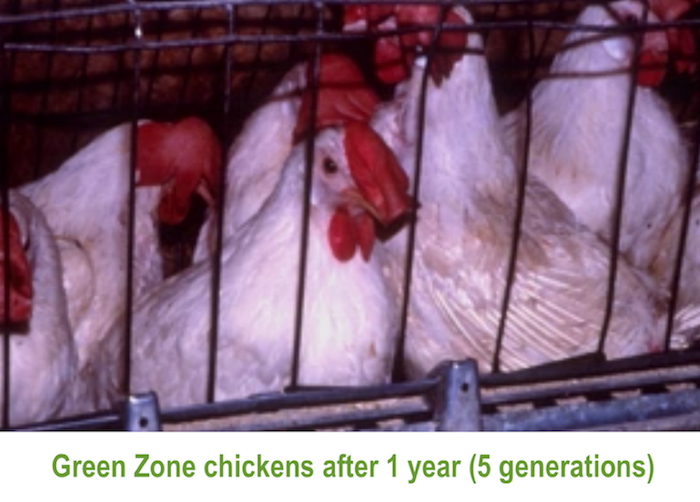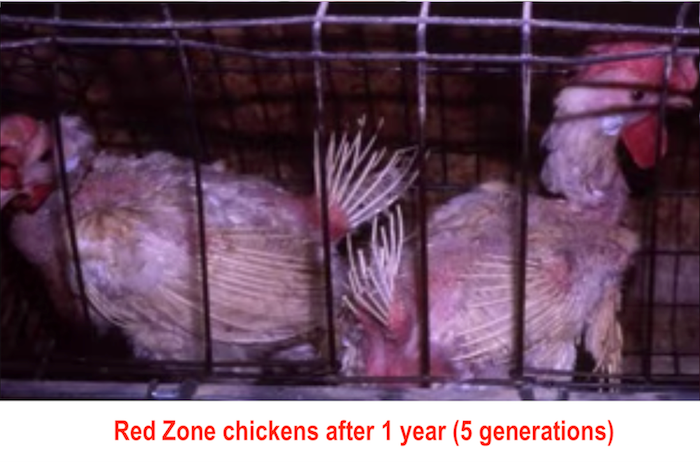Toxic Cultures and Lower Productivity
So, are you a red zone chicken or a green zone chicken? Huh? Well, let me explain. Bill Muir from Purdue University ran an experiment breeding chickens for egg production. He found star performing chickens, but they tended to be aggressive and he wondered if they were rising to the top by suppressing the other chickens. So, he grouped the chickens into red zone chickens (who were aggressive to their peers) and green zone chickens (who were friendly to their peers: ie: collaborative).
He took the best egg producers from each zone and bred them, measuring egg production and mortality rates for each zone. After 1 year (5 generations), the egg production for the green zone (collaborative) chickens was up 260%, but the red zone chickens had decimated themselves and killed half their peers.


The culture lesson from this experiment is that a toxic culture spirals in on itself, breeds further toxicity and leads to excessive internal competition and self-destruction of the group, whereas, highly collaborative cultures use their energy on external competition and collectively lift the group to higher productivity.
Have a think about whether your group is populated with green zone or red zone behaviours.
Harrison Assessments is a behavioural analytics tool that uncovers people's behavioural preferences so you can help eliminate red zone behaviours. Salpulse is our peer recognition platform that helps encourage green zone behaviours.
Salple takes an integrated, data-informed approach to organisational culture
